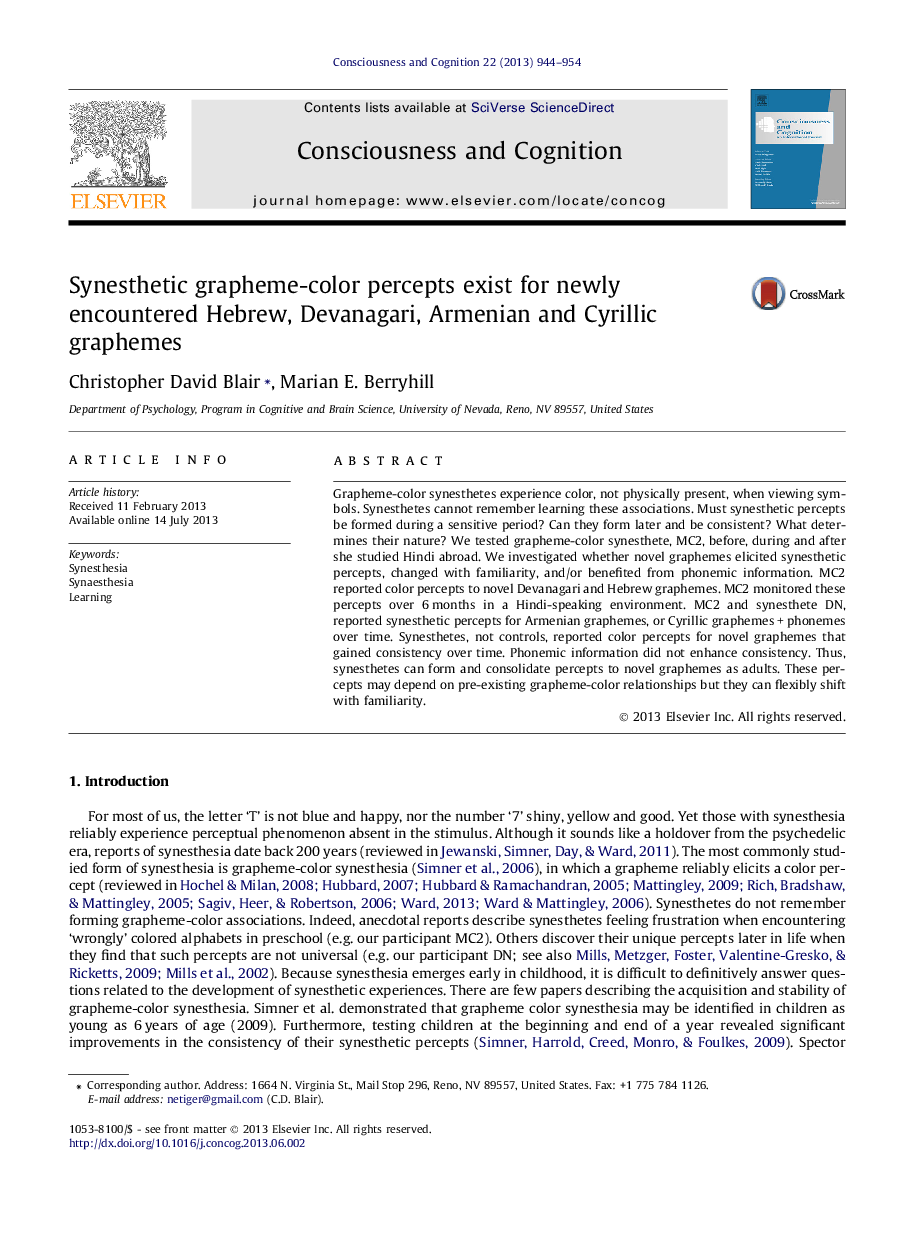| Article ID | Journal | Published Year | Pages | File Type |
|---|---|---|---|---|
| 10458469 | Consciousness and Cognition | 2013 | 11 Pages |
Abstract
Grapheme-color synesthetes experience color, not physically present, when viewing symbols. Synesthetes cannot remember learning these associations. Must synesthetic percepts be formed during a sensitive period? Can they form later and be consistent? What determines their nature? We tested grapheme-color synesthete, MC2, before, during and after she studied Hindi abroad. We investigated whether novel graphemes elicited synesthetic percepts, changed with familiarity, and/or benefited from phonemic information. MC2 reported color percepts to novel Devanagari and Hebrew graphemes. MC2 monitored these percepts over 6 months in a Hindi-speaking environment. MC2 and synesthete DN, reported synesthetic percepts for Armenian graphemes, or Cyrillic graphemes + phonemes over time. Synesthetes, not controls, reported color percepts for novel graphemes that gained consistency over time. Phonemic information did not enhance consistency. Thus, synesthetes can form and consolidate percepts to novel graphemes as adults. These percepts may depend on pre-existing grapheme-color relationships but they can flexibly shift with familiarity.
Keywords
Related Topics
Life Sciences
Neuroscience
Cognitive Neuroscience
Authors
Christopher David Blair, Marian E. Berryhill,
